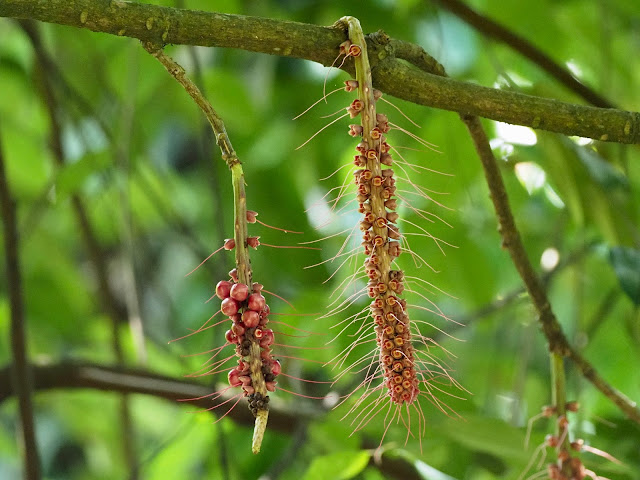Archived image
It's common to come across a pair of Greater Racket-tailed Drogos (Dicrurus paradiseues) in the taman, very likely the same pair that has been around for more than a couple of years already, and mainly keeping to the same area in the taman.
However lately this pair has been around in another part of the taman, and imagine my delight when I chanced upon what appeared to be a parent and sub-adult. This would be the first time I've across a young drongo, and it looked like the bird could be a rather young juvenile as it was following the parent around, or was it the parent that was teaching it to fly about.
When the parent flew off, the juvenile followed closely after, and interestingly how it soon slowly edged closer to the parent.
I soon learnt that there must be some training going on as the parent again flew to another part to be followed by the juvenile.
It has been reported that the male and female parent drongo will continue to look over the juveniles even after they have left the nest. In fact, even that the young will help to raise subsequent broods (Grzimek's Animal Life Encyclopedia, 2005).
I supposed as with any juvenile, its curiosity got the better of it as it tugged vainly at a twig.
The young has lighter coloured bill and no tail streamers yet.
The parent flying off and anticipating the juvenile to follow suit.
Meanwhile, it looked like the other parent has joined them but this one merely sat passively watching them.
Male and female greater racket-tailed drongo look alike so it's hard to say if this one is papa or mama.
Another close-by stopover for both parent and juvenile before I left the family alone. They already had me trying to move hastily but discreetly about the whole morning keeping up with their movements. However I wouldn't be afraid of losing track of their presence as the juvenile was calling out ceaselessly.









































